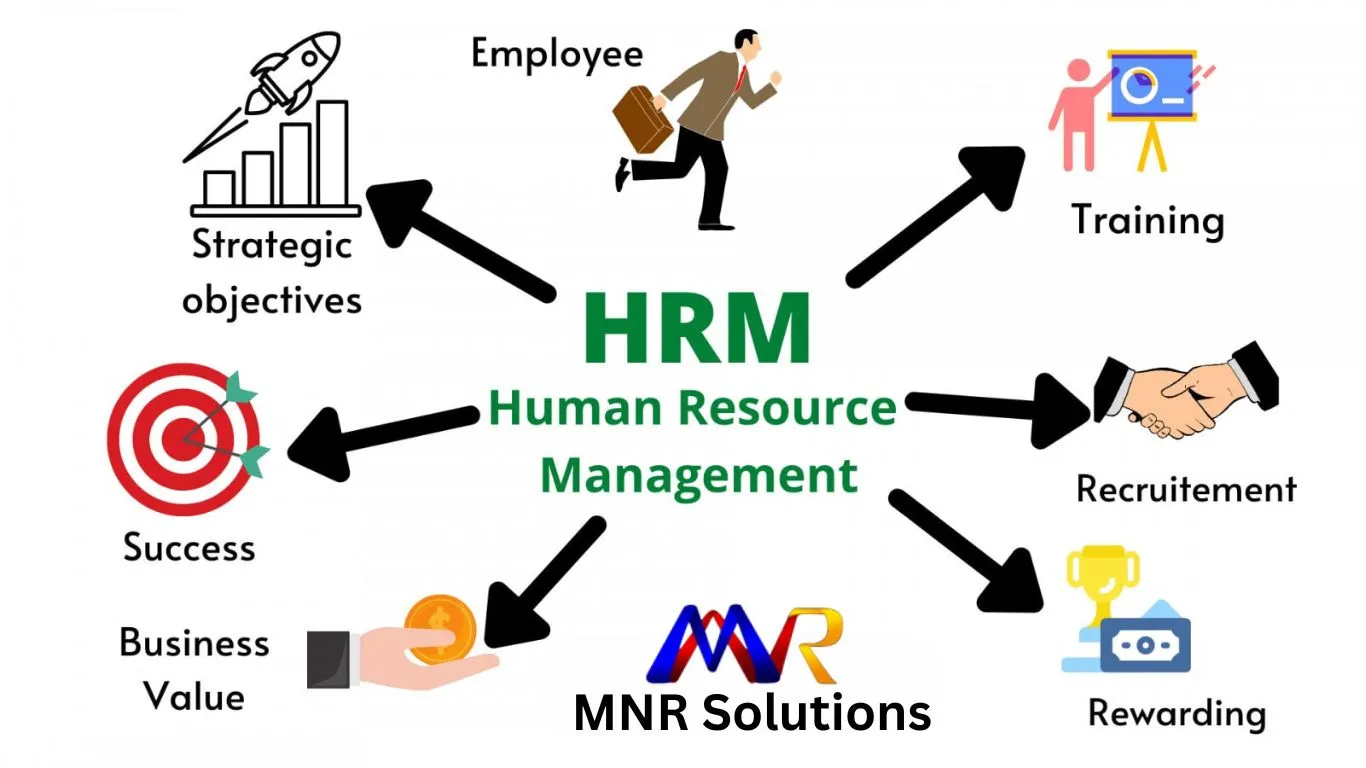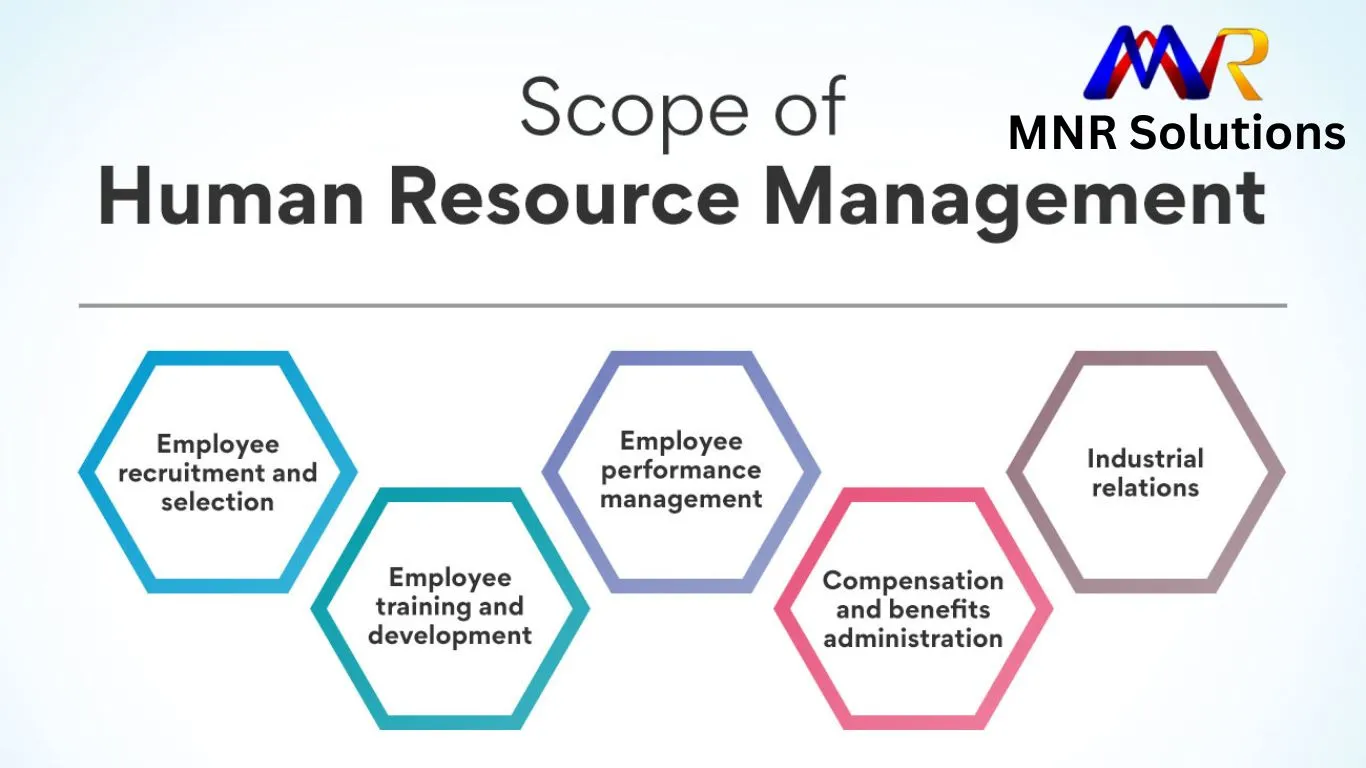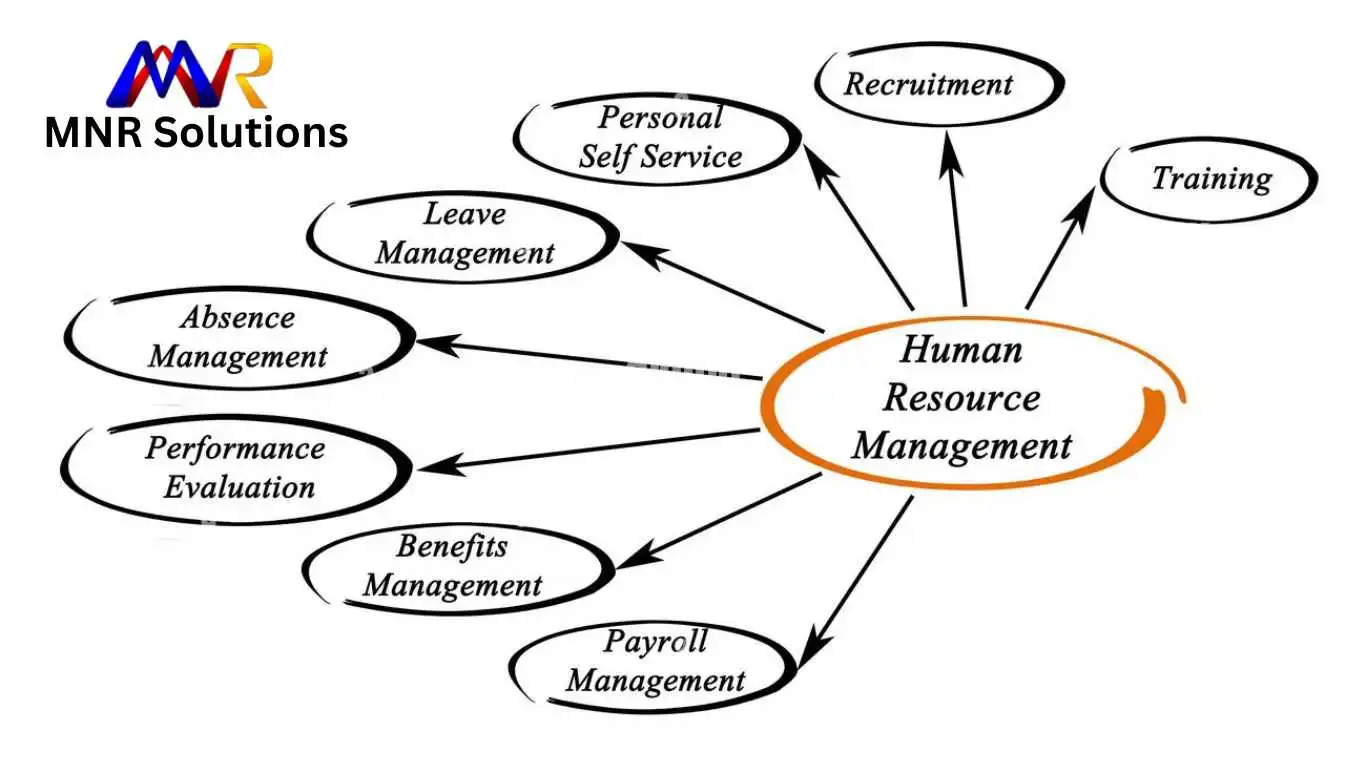No matter the sector, human resources are a universal feature of all organization’s. These people work for a business, firm, or organization as its staff. Research found that 34% of employees quit their jobs if they feel underappreciated. The company’s most precious asset is its workforce. The management of an organization’s personnel falls within the scope of Human Resource Management (HRM).
This blog post will cover the range of scope of human resource management and its responsibilities, such as hiring, training, and salary distribution for staff members.
What is Human Resource Management?

Human resource management is the strategic method used to manage the personnel of a business. It entails finding, vetting, employing, and orienting employees in addition to overseeing their performance, growth, and general welfare. Human resource management (HRM) also includes employee relations, benefits, pay, and legal compliance in the workplace.
Since the HR department handles HRM obligations on behalf of the business, it is critical to give them the resources they need to do their jobs well. Equipped with the appropriate tools, they can deploy resources efficiently, select and hire qualified candidates, develop and enhance their skills, and oversee them until they depart from the company.
Among the goals of a successful HRM are:
- Hiring capable workers who are driven to achieve the objectives of the company.
- Making the most efficient use of the current workforce
- Establishes a productive and appealing work environment that encourages work-life balance.
- Creating an environment that boosts worker satisfaction.
- Establishing and preserving cordial communication between management and employees
- Establishing and upholding moral guidelines both inside and outside
- Balancing one’s personal and corporate objectives.
Scope of Human Resource Management (HRM)

Managing a large number of employees and their related activities falls within HRM’s purview. You would be surprised at how much more human resource management encompasses. HRM is very important in today’s workplaces since it is dynamic, ever-changing, and far-reaching.
Let’s talk about the scope of human resource management as a whole:
Building a Community:
It’s the stage of management where an organization’s workforce is its main priority. HRM combines people, cultural, and structural approaches to maximize worker productivity and develop a highly competent and dedicated staff.
Planning for Human Resources:
The term “human resource planning” describes the procedure used by the business to determine how many positions are open. This planning also includes assessing the current payroll and determining if it is commensurate with the amount of work required. This provides insight into the company’s personnel situation—whether it is overstaffed or understaffed, and how to address it.
Design of Job Analysis:
Job analysis is a key component of human resource management. Human resource management includes learning every detail about every position in the organization and what kind of candidate is required to fill a position. This entails determining and summarizing the abilities required for that work, the nature of that employment, and any additional duties that go along with it.
Hiring and Choosing Candidates:
The business creates and publishes adverts in newspapers using data gathered from job analyses. This is the hiring process. Recruitment and selection constitute still another crucial facet of Human Resource Management. HR receives numerous applications after the publication of the advertisement, and it is followed by interviews and the selection of the most suitable employee.
Training the Workforce:
Following the staff selection, an orientation or induction program is held. Another crucial component of human resource management is this. The staff members receive background information about the company, an explanation of the organizational culture, principles, and work ethics, as well as an opportunity to meet and greet other staff members.
Education and Growth:
Each employee participates in a training programme designed to improve his performance at work. A training programme is also offered to highly experienced current employees. We refer to this as refresher training. The corporation invests a lot of money in training and development.
Evaluation of Performance:
The Human Resources department conducts a performance appraisal, or review, of the employee after the latter has worked for around a year. These evaluations are used to determine future compensation increases, bonuses, and promotions.
Compensation and Benefits Planning:
The Human Resources department is responsible for investigating compensation and compensation planning. Human resource management includes talking about basic pay and other benefits to which an employee is entitled. It is the responsibility of the human resource manager to thoroughly explain each benefit, including health insurance, vacation time, and travel benefits. These benefits all contribute to creating a more productive work atmosphere.
Motivation and Safety Measurements:
To maintain the number of employees in the organization, motivation becomes crucial. The Human Resources section is responsible for researching various motivational strategies. Apart from this, for the sake of the workers, a few health and safety laws must be observed. The HR division is in charge of this as well.
Workplace Relations:
Keeping cordial relationships with union members is another crucial aspect of human resource management. By doing this, the organization will be able to avoid lockouts and strikes and maintain efficient operations.
Addressing Employee Dissatisfaction:
Redress of employee grievances is included in the purview of human resource management. They often solicit employee feedback to better understand any challenges these workers may be experiencing and to improve working conditions. To preserve employee trust in this process, confidentiality is preferred. It makes them feel comfortable talking about issues they have with the team, the job, or the workplace.
The following are the main responsibilities of human resource management:

- Ensuring adherence to the law and moral principles:
To guarantee adherence to labour laws, employment regulations, and ethical standards, HR professionals are essential. They maintain a current understanding of legal requirements, create policies that conform to legal frameworks, and guarantee that workers are treated fairly and morally. This duty aids in shielding the company from moral and legal dilemmas as well as its employees.
- Promoting a Happy and Inclusionary Workplace Environment
HR specialists must create a welcoming workplace that values equality, diversity, and inclusiveness. They design programmes to stop discrimination, encourage tolerance, and foster a cooperative and team-oriented culture. HR specialists also handle employee complaints and assist in settling disputes, fostering a positive work environment for everybody.
- Managing Change and Crises
HR experts are vital to the efficient management of organizational transitions in times of crisis or change. They help reduce the impact on the workforce, convey changes, and offer support to staff. HR specialists play the role of change agents, easing staff transitions and assisting them in adjusting to new situations.
Wrapping Up!
Developing a productive workforce requires dedication and calls for the creation and application of appropriate policies and plans. For professional solutions in hiring, obtaining talent, and employee relations, contact MNR Solutions. MNR Solutions enables your business to maximize human resources and promote long-term success through careful planning and dedication to the economy.

